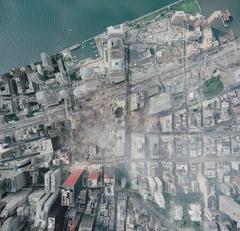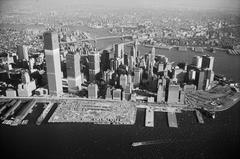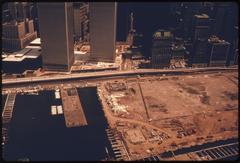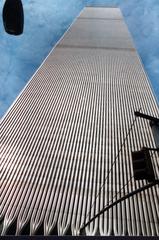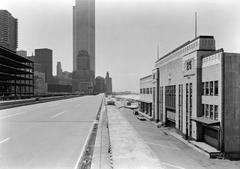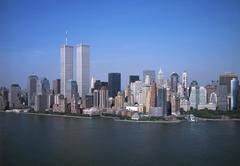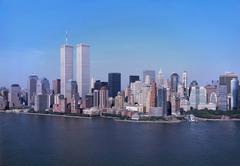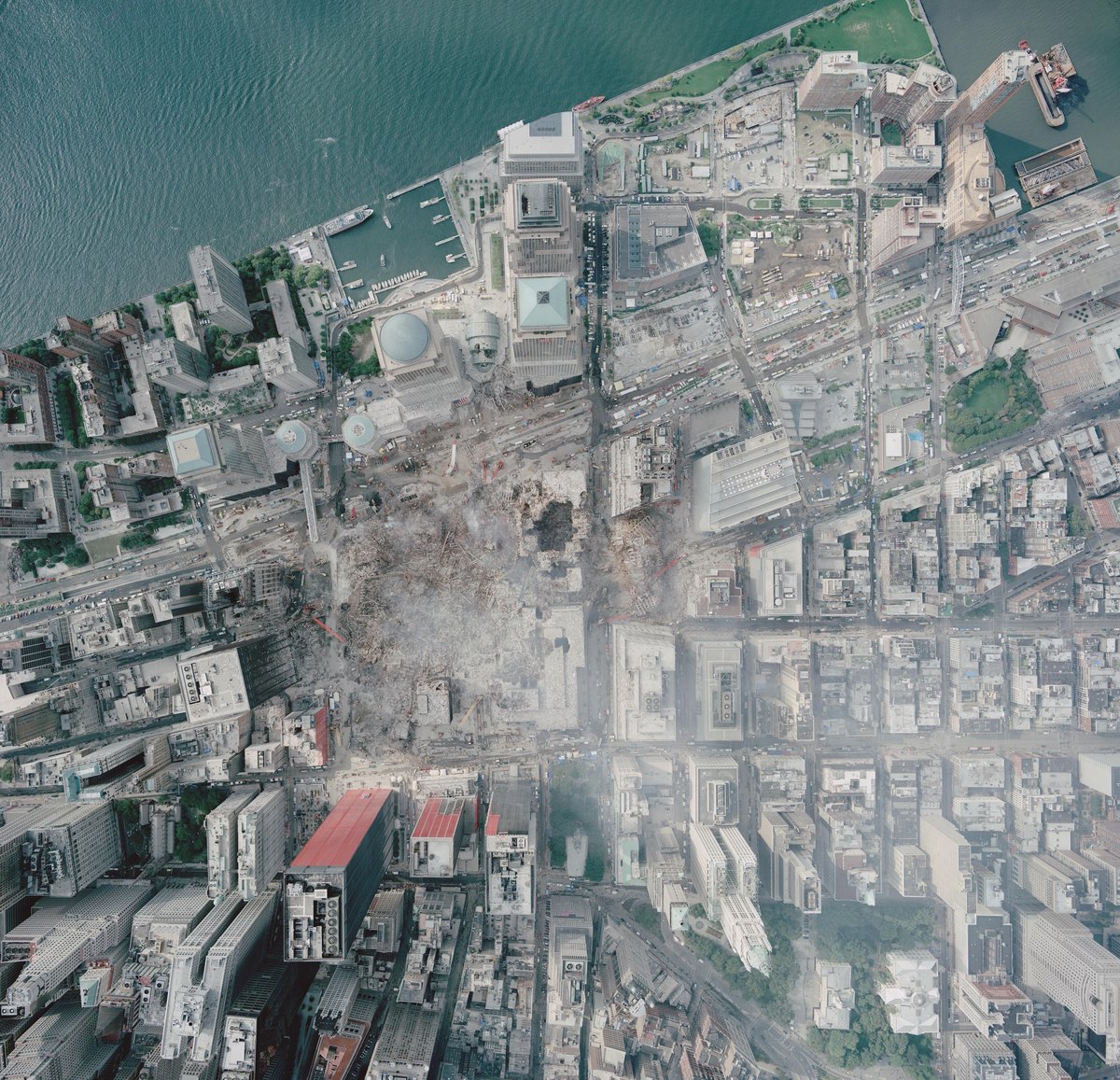
Two World Trade Center: Visiting Hours, Tickets, and Complete Guide to New York City’s Historic Site
Date: 14/06/2025
Introduction
Two World Trade Center (2 WTC) stands as a symbol of both New York City’s indomitable spirit and its ongoing renewal after the events of September 11, 2001. Located at 200 Greenwich Street in Lower Manhattan, the site of 2 WTC and its neighboring attractions—like the 9/11 Memorial & Museum, One World Observatory, and the Oculus—form a vibrant campus that honors the past while looking toward the future. This detailed guide provides everything visitors need to know about 2 WTC, including its history, current construction status, visiting hours for the World Trade Center campus, ticketing information, accessibility, nearby attractions, and tips for a meaningful visit.
Table of Contents
- Historical Background of the Original Two World Trade Center
- Aftermath of September 11 and Early Rebuilding
- Design Evolution and Construction Progress
- Current Status and Visitor Experience
- Visiting Hours, Tickets, and How to Plan Your Visit
- Key Attractions on the World Trade Center Campus
- Accessibility and Visitor Tips
- Frequently Asked Questions (FAQ)
- Cultural Significance and Legacy
- References and Further Reading
Historical Background of the Original Two World Trade Center
Completed in 1973, the original Two World Trade Center—often referred to as the South Tower—was a 1,362-foot skyscraper with 110 stories, designed by architect Minoru Yamasaki. Alongside its twin, One World Trade Center, the tower became a global icon of New York’s economic power and architectural ambition. The South Tower featured a popular observation deck, nearly 22,000 windows, and served as a bustling hub of international commerce (Britannica, History.com).
Aftermath of September 11 and Early Rebuilding
On September 11, 2001, Two World Trade Center was struck by United Airlines Flight 175, collapsing at 9:59 a.m. The attacks resulted in the loss of thousands of lives and left a lasting mark on the city and the world (NYC.gov). In the years following, the site—often called Ground Zero—became a focal point for mourning, remembrance, and debate about how best to honor the victims and rebuild.
A global design competition led to Daniel Libeskind’s 2003 master plan, envisioning a new complex with five towers, a memorial, and integrated public spaces (Skyscraper Museum, Wikipedia).
Design Evolution and Construction Progress
The journey to rebuild 2 WTC has involved several prominent architects and evolving designs:
- Norman Foster’s Initial Design (2006–2015): Foster + Partners envisioned a crystalline tower with a diamond-shaped crown, reaching 1,270 feet, referencing the original Twin Towers but incorporating modern sustainability and flexibility (The Real Deal).
- Bjarke Ingels Group Redesign (2015–2021): BIG’s concept featured stacked, offset glass volumes and outdoor terraces, targeting media and tech tenants. The plan was shelved after anchor tenants withdrew (ArchDaily).
- Return to Foster + Partners (2022–2025): The most recent design blends Foster’s original vision with lessons learned, offering a sleek, sustainable 80-story, 1,348-foot tower with glass curtain walls and green terraces (New York YIMBY).
As of June 2025, only the foundation and basement levels have been completed. Vertical construction is pending the confirmation of anchor tenants, with American Express reportedly in exclusive negotiations (NY Post). While 2 WTC is not yet open to the public, the surrounding campus is fully accessible and offers a range of experiences.
Current Status and Visitor Experience
2 WTC Construction: The site is currently fenced off and not open for tours or visits, as above-ground construction has not commenced (ArchDaily). Temporary installations, such as public art and pop-up events, are occasionally hosted in the area.
World Trade Center Campus: The wider campus is a major destination, featuring the 9/11 Memorial & Museum, the Oculus transportation hub, Liberty Park, and the Perelman Performing Arts Center. These attractions are open to visitors and provide context for the ongoing redevelopment (911memorial.org, One World Observatory).
Visiting Hours, Tickets, and How to Plan Your Visit
World Trade Center Campus
- 9/11 Memorial Plaza: Open daily, 8:00 a.m. – 8:00 p.m. Admission is free.
- 9/11 Memorial Museum: Open Wednesday to Monday, 9:00 a.m. – 7:00 p.m. Closed most Tuesdays (911memorial.org).
- One World Observatory: Open daily, 9:00 a.m. – 9:00 p.m. (hours vary seasonally; check ahead) (One World Observatory).
- Oculus and Retail: Open to the public daily, with varying hours for shops and dining (Earth Trekkers).
- Perelman Performing Arts Center: Open for scheduled performances and public events (ArchDaily).
Tickets and Reservations
- 9/11 Memorial: No ticket required for the outdoor plaza.
- 9/11 Museum: Timed-entry tickets required; standard adult admission is about $33. Book in advance online (911memorial.org).
- One World Observatory: Tickets start at $44 for adults; purchase in advance to avoid long lines (One World Observatory).
- Performing Arts Center: Tickets available for performances via the official website.
Getting There
- Subway: E, R, W, A, C, 2, 3, 4, 5, J, Z, and 1 lines serve the area.
- PATH Train: Direct access from New Jersey.
- Bus and Walking: Multiple MTA routes and easy walking access from Battery Park, Wall Street, and other downtown destinations (Earth Trekkers).
Key Attractions on the World Trade Center Campus
9/11 Memorial & Museum
- Reflecting Pools: Twin pools with the largest man-made waterfalls in North America, set within the original tower footprints. Names of victims are inscribed in bronze surrounding the pools (911memorial.org).
- Museum: Artifacts, oral histories, and multimedia exhibits explore the events of September 11 and their aftermath.
One World Observatory
- Observation Deck: Located on floors 100–102, providing 360-degree city views, interactive exhibits, and dining at ONE Dine (One World Observatory).
The Oculus
- Architecture: Santiago Calatrava’s striking transportation and retail hub, designed to evoke a bird in flight. Features shops, restaurants, and dramatic natural light (Earth Trekkers).
Perelman Performing Arts Center
- Design: Clad in translucent Portuguese marble, the center hosts a variety of performances and public events (ArchDaily).
Additional Nearby Memorials
- St. Nicholas Greek Orthodox Church: Rebuilt and reopened adjacent to Liberty Park.
- Liberty Park, The Sphere, and other tributes: Offer opportunities for reflection and city views.
Accessibility and Visitor Tips
- Accessibility: All major attractions are wheelchair accessible, with elevators, ramps, and accessible restrooms. Service animals are welcome. Assistive listening devices are available upon request (911memorial.org).
- Security: Airport-style screening is required for museum and observatory entry.
- Food and Drink: Not permitted inside the Memorial or Museum; available at the Oculus and nearby Brookfield Place.
- Photography: Permitted in most areas, but visitors are encouraged to be discreet and respectful, especially around the Memorial pools.
Tip: Allow at least 4–6 hours to explore the Memorial, Museum, and Observatory. Early mornings and late afternoons are less crowded. Prepare for an emotional experience and plan lighter activities after your visit (Free Tours by Foot).
Frequently Asked Questions (FAQ)
Q: Is Two World Trade Center open for public visits?
A: No, 2 WTC is under construction and not open to the public. You can visit the surrounding campus and nearby attractions.
Q: What are the 9/11 Memorial and Museum hours?
A: The Memorial is open daily from 8:00 a.m. to 8:00 p.m.; the Museum is open Wednesday–Monday, 9:00 a.m. to 7:00 p.m.
Q: How do I get tickets for the 9/11 Museum or One World Observatory?
A: Purchase tickets online in advance at 911memorial.org and One World Observatory.
Q: Is the site accessible for people with disabilities?
A: Yes, the campus is fully accessible.
Q: Are guided tours available?
A: Yes, expert-led tours are available for the Museum and Memorial and can be booked online.
Q: Can I take photographs?
A: Yes, but please be respectful, especially in memorial areas.
Cultural Significance and Legacy
The World Trade Center site is a living memorial to resilience, remembrance, and hope (911memorial.org). The ongoing redevelopment—including the anticipated rise of 2 WTC—reflects New York’s commitment to honoring its history while building for future generations. The campus’s mix of memorials, museums, public spaces, and cutting-edge architecture makes it a must-visit for anyone interested in the city’s past and future.
References and Further Reading
- Skyscraper Museum Timeline
- World Trade Center Official Site
- ArchDaily: Remembering 9/11
- 9/11 Memorial & Museum
- New York YIMBY: 2 & 5 WTC Models
- ArchDaily: New 2 World Trade Center Renders
- One World Observatory
- Time Out New York: WTC Models
- History.com: World Trade Center
- NYC.gov: 9/11 Historical Context
- Earth Trekkers: NYC Itinerary
- Free Tours by Foot: 9/11 Memorial NYC
- ArchDaily: Perelman Performing Arts Center
- NewYorkCity.ca: 9/11 Memorial
